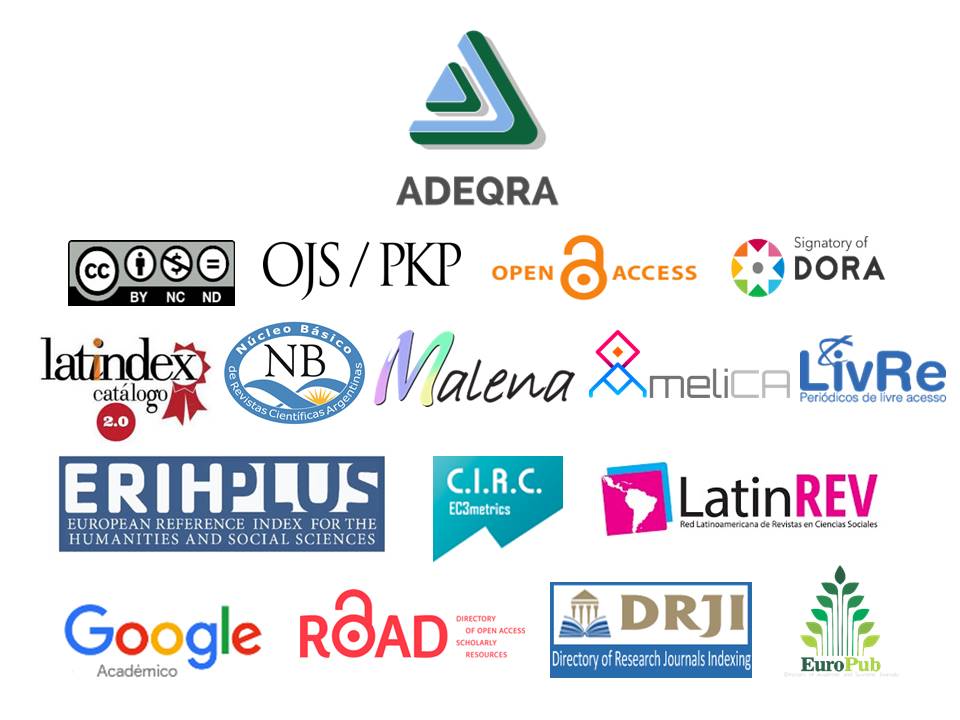The Recycling of Cans in the University Level: Contributions of Psychology and Didactics to Inorganic Chemistry
Keywords:
chemistry teaching, synthesis of alum, recycling, sustainable behaviour, comprehensive educationAbstract
In the context of the internships of students in the Chemical Analyst career at the National University of San Luis, the objective of the work was to design a new didactic proposal for experimental practical work regarding General and Inorganic Chemistry topics, incorporating contributions from Didactics and Environmental Psychology. Two studies were conducted: a quantitative one and a qualitative one. The quantitative study focused on teaching synthesis techniques and solid-state studies that allowed analyzing the purity of the obtained compound and monitoring the reaction yield. The qualitative study involved the implementation of data collection instruments to investigate sustainable behaviors, such as bibliographic reading, questionnaire responses, reflection instances, and subsequent socialization. It was concluded that the interdisciplinary work carried out through this didactic proposal favored the comprehensive training of students in the Chemical Analyst career at this university.
References
Abraham, J. M., Azar, M. L. y Segovia, R. F. (1997). Aplicación de un sistema que facilite el aprendizaje cooperativo de las ciencias -particularmente química- y la tecnología vinculadas al desarrollo y el medio ambiente. Química y Vida Diaria, 8, 146-149.
Anastas P. y Eghbali, N. (2010). Green Chemistry: Principles and Practice. Chemical Society Reviews, 39, 301-312.
Atkins, P. (2006). Química Inorgánica. (4° edición) Mc Graw Hill.
Azar, M. L., Abraham, J. M. y Mainero, N. (2012). Consideraciones sobre la necesidad de gestionar los conocimientos científicos y tecnológicos obtenidos en el nivel superior para aportar a un desarrollo sostenible, compatible e incluyente: contexto de los proyectos educativos integrales (PEI). En: G. Pinto Cañon y M. Martín Sánchez. Enseñanza y divulgación de química y la física, 435-438. Madrid: Garceta.
Benoit Ríos, G. C. (2020). La formulación de preguntas como estrategia didáctica para motivar la reflexión en el aula. Cuadernos de Investigación Educativa, 11(2), 95-115. https://doi.org/10.18861/cied.2020.11.2.2994
Corral Verdugo, V. (2001). Comportamiento Proambiental. Una introducción al estudio de las conductas protectoras del ambiente. (1° edición), España: Resma.
Corral Verdugo, V. (2012). Sustentabilidad y Psicología Positiva. Una visión optimista de las conductas proambientales y prosociales. (1° edición), México: El Manual Moderno.
Cotton, F. A. y Wilkinson, G. (2000). Química Inorgánica Avanzada. (1º edición), México: LIMUSA.
Martino C. M., Verardo S. A., Romanelli G. P (2014). Una propuesta de introducción de contenidos de química verde, en la currícula del nivel polimodal. Educación en la Química, 10(3).
Naciones Unidas, (1987). Our Common Future. Report of the World Commission on Environment and Development. https://sustainabledevelopment.un.org/content/documents/5987our-common-future.pdf
Nakamoto, K. (2009). Infrared and Raman Spectra of Inorganic and Coordination Compounds. (6° edición). Wiley.
Nyburg, S. C., Steed, J. y Aleksovska, S., Petrusevski, V. M. (2000). Structure of the alums. I. On the sulfate group disorder in the alpha-alums. Acta Crystallographica B, 56, 204-209. https://doi.org/10.1107/S0108768199014846
Oskamp, S. (2000). A Sustainable Future for Humanity? American Psychologist, 55, 496-508. http://dx.doi.org/10.1037/0003-066X.55.5.496
Presidencia de la Nación Argentina (2021). Ley 27621 para la implementación de la educación ambiental integral en la República Argentina. https://www.argentina.gob.ar/normativa/nacional/ley-27621-350594
Rodriguez, J. J. J. (2002). La Ingeniería Ambiental: Entre el reto y la oportunidad. (1° edición). Síntesis, Universidad Internacional de Andalucía.
Sierra, A., Meléndez, L., Ramírez-Monroy, A. y Arroyo, M. (2014). La química verde y el desarrollo sustentable. RIDE Revista Iberoamericana para la Investigación y el Desarrollo Educativo, 5(9), 1-15. https://www.ride.org.mx/index.php/RIDE/article/view/1
Triana-Hernández, B. M. (2014). The Chemistry Discipline for Environmental Training of Agronomist. Revista Cubana de Química, 26(3), 259-275. https://cubanaquimica.uo.edu.cu/index.php/cq/article/view/286
Van Lange, P. A. M. (2000). Beyond self-interest: A set of propositions relevant to interpersonal orientations. En: M. Hewstone y W. Stroebe (Eds.), European Review of Social Psychology (Vol. 11, pp. 297-330). Londres: Wiley.
Published
How to Cite
Issue
Section
License
Copyright (c) 2024 Germán E. Gomez, Luciana Comerci , Romina Nievas, Jorge A. Diaz, Carolina E. Cerizola, Johana Martin, Fernán D. U. Sarmiento

This work is licensed under a Creative Commons Attribution-NonCommercial-NoDerivatives 4.0 International License.



